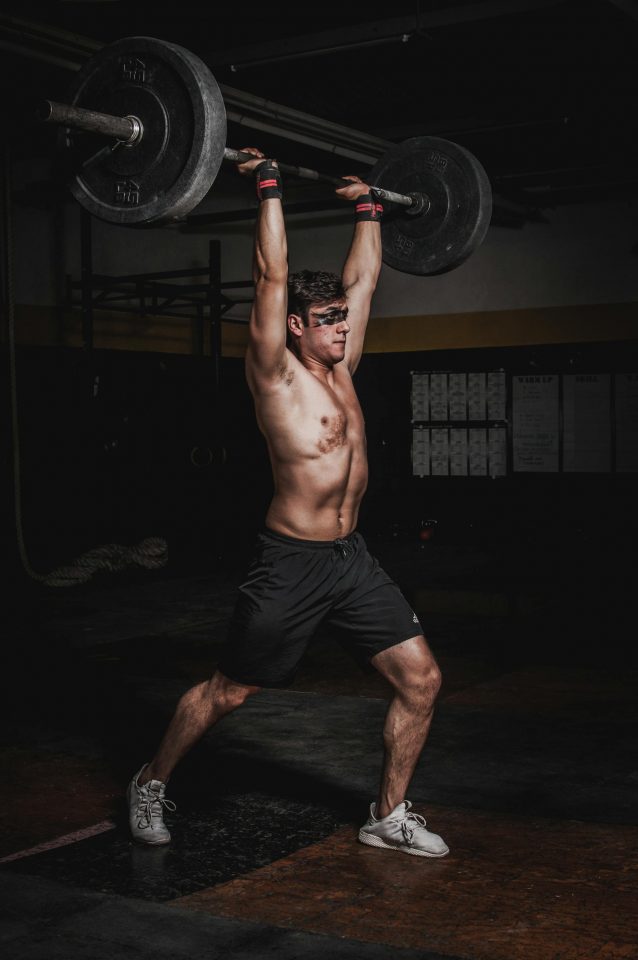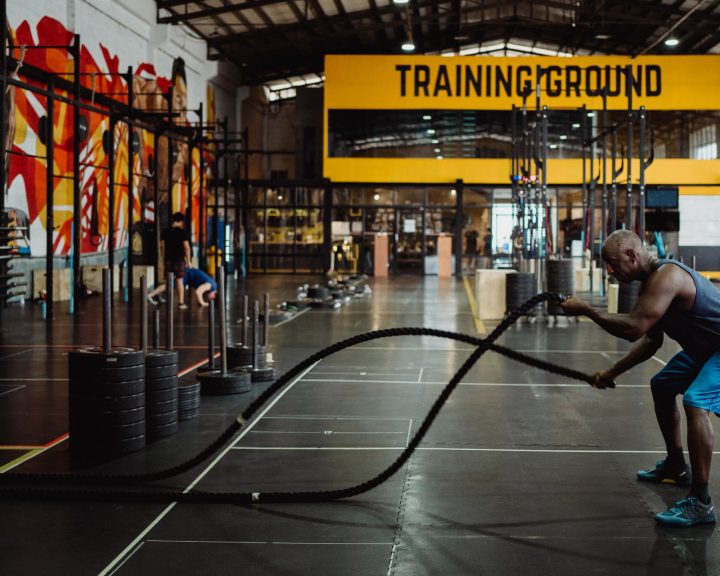Besides being part of the clean and jerk, which is part of Olympic weightlifting, the jerk is also a great conditioning exercise for many athletes. It is a total body exercise, is done very explosively, and it requires a lot of technique and speed to be done properly. This is a great exercise for athletes that have to lever off one side of their body to perform their sport (so jumpers, throwers, most passers, kickers, baseball players, and softball players).
The jerk is divided into several phases:
- The start
- The dip
- The drive
- The split
- The finish
The start:
This exercise begins with the barbell on the front of the shoulders. It can be cleaned to that position or taken off the position from the rack. The important thing is to grip the bar with almost the same grip-width as the clean. Stand up with the feet hip-width apart. The chest should be out with the shoulders back. The elbows do not have to be as high as during a front squat, they can be dropped a little making a 45 degree angle between the upper arm and the body.
The dip:
From here the athlete will quickly move into a quarter squat. As this is done make sure to keep the bar on the shoulders. The dip is very fast, think about the descent in a vertical jump. There is only a need to move to a quarter squat, as this is done keep the weight on the heels.
The drive:
Shifting from the dip to the drive needs to be very fast. Pausing at the bottom of the dip will dissipate the elastic energy that we are trying to create and tap into with this lift. From the quarter squat immediately reverse directions as extend the knees, hips, and ankles driving the bar up off the shoulders.
The split:
Once the bar has reached eye level move into the split position. The front foot moves forward so that it lands flat on the ground ahead of the athlete, with the front knee and hip flexed. The back foot moves backwards and lands so that the ball of the back foot makes contact on the ground behind the athlete. Done right, this will drop the athlete under the bar allowing them to receive it on extended arms.
When the bar is received, it should be slightly behind the athlete’s head and in line with the hips. The arms should be straight. This bar position needs to be maintained until the lift is over.
The finish:
From the split, recover the front foot by moving it backwards. Then move the back foot forward. This is an important sequence for a successful lift. Lower and repeat!



